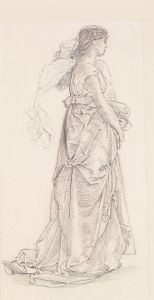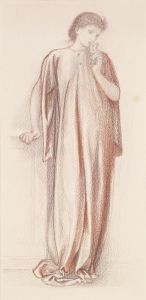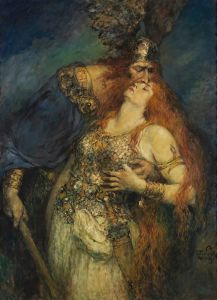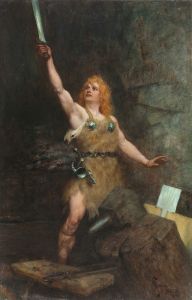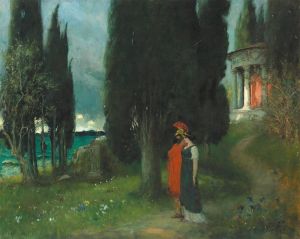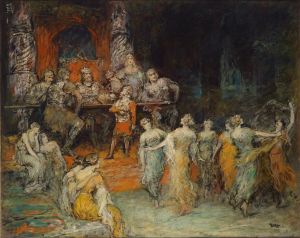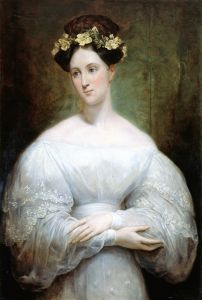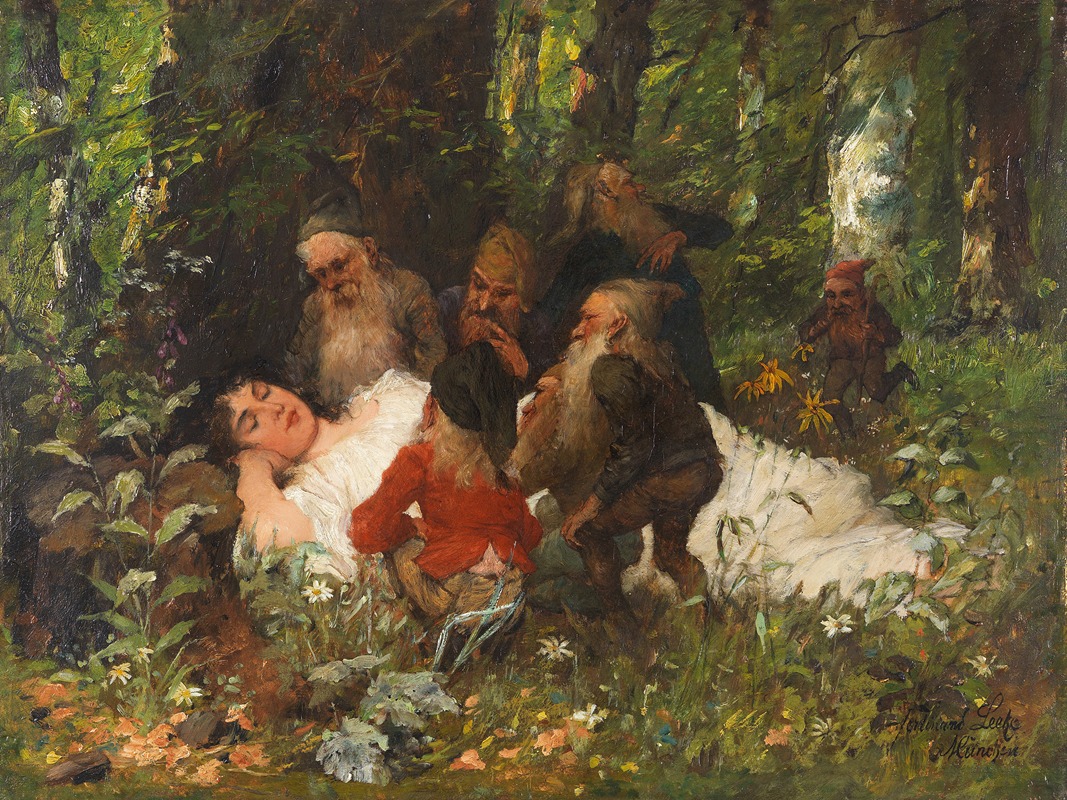
Schneewittchen
A hand-painted replica of Ferdinand Leeke’s masterpiece Schneewittchen, meticulously crafted by professional artists to capture the true essence of the original. Each piece is created with museum-quality canvas and rare mineral pigments, carefully painted by experienced artists with delicate brushstrokes and rich, layered colors to perfectly recreate the texture of the original artwork. Unlike machine-printed reproductions, this hand-painted version brings the painting to life, infused with the artist’s emotions and skill in every stroke. Whether for personal collection or home decoration, it instantly elevates the artistic atmosphere of any space.
Ferdinand Leeke was a German painter known for his works that often depicted scenes from literature, mythology, and fairy tales. One of his notable paintings is "Schneewittchen," which translates to "Snow White" in English. This painting is an artistic representation of the classic fairy tale "Snow White," which was popularized by the Brothers Grimm in the 19th century.
Leeke's "Schneewittchen" captures the essence of the fairy tale through its vivid depiction of the story's characters and setting. The painting typically features Snow White, the central character, often portrayed in a serene and innocent manner, reflecting her purity and the trials she faces throughout the tale. The artist's use of color and composition brings to life the enchanting and sometimes dark atmosphere of the fairy tale world.
Ferdinand Leeke was born on April 7, 1859, in Burg bei Magdeburg, Germany. He studied at the Academy of Fine Arts in Munich, where he was influenced by the Romantic and Symbolist movements that were prevalent during that time. Leeke's work often reflects these influences, with a focus on detailed and expressive portrayals of his subjects. His ability to convey emotion and narrative through his paintings made him a sought-after artist for illustrating literary and mythological themes.
The "Snow White" fairy tale, which Leeke's painting is based on, is one of the most famous stories collected by the Brothers Grimm. It tells the story of a young princess named Snow White, who is known for her beauty and kindness. Her stepmother, the Queen, becomes envious of Snow White's beauty and plots to have her killed. However, Snow White escapes and finds refuge with seven dwarfs in the forest. The tale unfolds with themes of jealousy, betrayal, and the triumph of good over evil.
Leeke's interpretation of "Schneewittchen" is significant as it reflects the cultural and artistic context of the late 19th and early 20th centuries in Germany. His work contributes to the visual legacy of the Snow White story, which has been adapted and reimagined in various forms of art, literature, and film over the years. The painting is an example of how artists of that era engaged with popular narratives, bringing them to life through their unique artistic lens.
While specific details about the painting's creation and its current location may not be widely documented, Ferdinand Leeke's "Schneewittchen" remains an important piece within the broader context of fairy tale art. It exemplifies the enduring appeal of classic stories and the role of visual art in interpreting and preserving cultural heritage.






